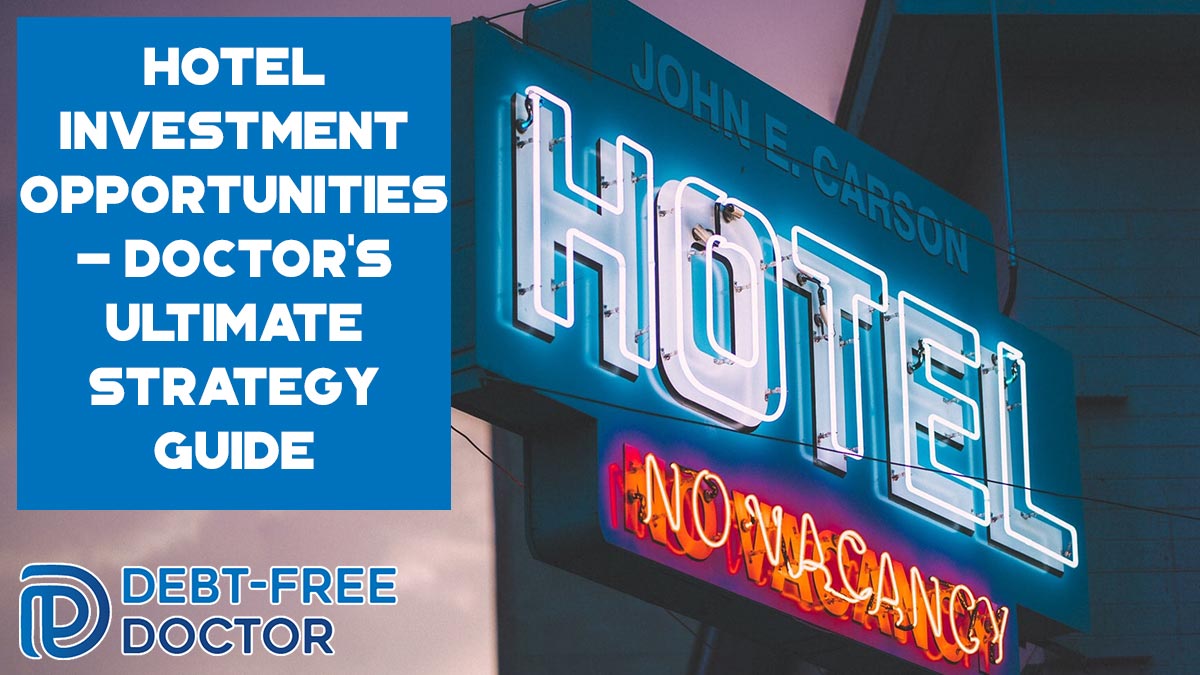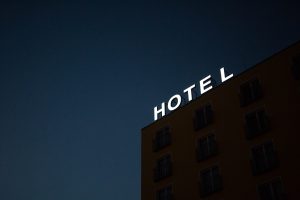On February 21, 2020, the Dow Jones was trading at an all time high of 28,992. Who would have thought that only a month later it would drop almost 10,000 points to 19,173 due to a worldwide pandemic?
I don’t know about you but I’m certainly glad that 2020 is in our rearview mirror. Good riddance!
Louisiana dental practices were shut down for two months which gave me time to connect with other doctors to find out how they were faring.
If I were to describe with one word what I saw happening it would have been “panic“.
Both physicians and dentists were up in arms trying to figure out what to do as they had no other streams of income coming in.
Teaching how to develop multiple passive income streams was one of the main reasons I started the Passive Investors Circle.
Unfortunately, people began to follow others and sold their holdings ultimately at a loss.
The good news was that by August 2020 the Dow was already back up to over 28,000. The bad news was that those that pulled out lost out on some MAJOR gains.
I was less stressed to know we had additional streams of income from multifamily syndication investments.
But the one thing last year the pandemic made me realize was that I needed to focus on growing our real estate portfolio larger and MUCH faster.
After the Dow dropped during the pandemic, it reminded me of a famous Warren Buffett quote:
“Be fearful when others are greedy, and be greedy only when others are fearful.” – Warren Buffett
It’s human nature to get caught up in the madness, panic and anxiety that others around us are feeling. This is exactly what happened in March of 2020.
As the news was reporting the chaos happening in the U.S., most investors either stopped investing or sold their holdings.
But there were others that capitalized and made a tremendous amount of wealth as they saw an opportunity.
Speaking of opportunity, there seems to be one around the corner that not too many are talking about until now….let’s find out about it shall we?
Don’t Miss Any Updates. Each week I’ll send you advice on how to reach financial independence with passive income from real estate.
Sign up for my newsletterCurrent State of the Hospitality Market
“In the midst of every crisis, lies great opportunity” – Albert Einstein.
The 2020 pandemic all but shut down the hospitality and tourism industry. Given the current limited amount of multifamily deal flow available coupled with predictions following the COVID-19 outbreak, there’s been some unique opportunities emerge in the hospitality area.
Yes, hospitality.
As you can imagine, nationwide restrictions on travel has resulted in occupancy rates at hotels to plummet. We traveled in the summer of 2020 and the Average Daily Rates (ADR) were 70% less than normal while the occupancy hovered around 15%.
Needless to say, we got some great deals but I felt like I was in the hotel from the Shining (glad Jack wasn’t chasing me though!).
The financial impact on the hospitality industry has caused many owners to either refinance or sell at a huge loss. This increase in the number of distressed hotels hitting the market opens the doors for new opportunities to capture the benefits of these quality properties. These new deals appear to be well poised for strong returns.
As more states continue to “open up” and travel restrictions are relaxed, expect an increase in both occupancy rates and ADRs.
Finding a hotel investment opportunity in the right areas that are managed correctly can generate some very attractive yields.
How To Invest In Hotels
#1 Hotel REITs
REITs are real estate investment trusts which is one of the easiest methods busy doctors can add real estate to their portfolio passively.
With a REIT, you’re buying stock in a company that invests in commercial real estate. This can be either public or private and similar to investing in mutual funds.
REITs usually specialize in one particular property sector such as lodging and resort REITs.
One of the advantages that attracts investors to REITs is you are able buy or sell shares at anytime making your money liquid.
#2 Crowdfunding platform investing
Many of the larger crowdfunding platforms (Fundrise) are now offering investment opportunities in the hospitality sector.
These investments are now open to both accredited and nonaccredited investors with low minimums.
Even though crowdfunding is quite popular, I no longer invest in these due to losing my tail many years ago with Realty Shares.
#3 Direct purchase
Similar to an apartment complex, flat out buying a hotel property would be the most direct way to acquire one.
As you can imagine, you’d need millions of dollars of capital and a source that would be willing to finance the debt.
Busy professionals would have a hard time going this route as being an active investor as your main responsibility would be managing the daily operations.
#4 Syndication
This option would appeal to the professional that wants to focus their time doing what they do best yet still invest in a hotel business.
Hotel syndications are set up similar to apartment syndications as there’s the sponsor (GP – general partner) and passive investors (LP – limited partner).
The sponsor (hotel ownership group) are the ones that would identify, purchase and eventually manage all of the hotel operations.
As with most syndications, these deals are for accredited investors with an initial investment of $50,000 – $75,000.
The limited partners simply kick back and receive quarterly distribution checks during the hold period (5-7 years).
Financial Metrics
Before considering to invest in the hospitality space, it’s important to be aware of the key performance indicators (KPI) involved.
The 3 main ones are:
- Occupancy
- ADR (average daily rate)
- RevPAR (revenue per available room)
Occupancy
The number of rooms that are sold divided by the total number of rooms in a hotel’s inventory is the occupancy rate.
This measures the utilization of a property’s available capacity.
Average daily rate
Average daily rate (average rate) or ADR is calculated by dividing the total revenue for all rooms by the number of room actually sold.
This is especially helpful when assessing pricing levels.
RevPAR
RevPAR or revenue per available room is a metric that provides information regarding hotel rooms being sold and how much revenue is being generated from those bookings.
RevPAR helps the hotel operators measure their revenue generating performance to accurately price rooms.
If the RevPAR is increasing, it could mean the average room rate or occupancy rate is increasing – or both.
RevPAR calculation
To calculate RevPAR, multiply the average daily rate (ADR) by the occupancy rate.
- Average Daily Rate x Occupancy Rate
For example if a hotel is occupied at 80% with an ADR of $100, the RevPAR will be $80.
It’s important for owners to constantly review this metric as they’re able to compare their property’s performance with other competition.
5 Reasons Doctors Should Consider Hotel Investments
#1 Tax benefits
Real estate ownership is one of the most tax efficient investments you can hold in your portfolio.
The IRS loves both real estate owners and those that start businesses. And it’s for this reason they offer a gift. Yes, they actually gift us with something called depreciation which is a tax break that allows you to write off the value of an asset over time.
Depreciation is one of the most powerful wealth building tools available which is why most millionaires (90%) own real estate.
As most things lose their value with the passage of time (computer, cell phone, etc.), the IRS allows us to take a tax deduction for that declining value (depreciation).
Even though real estate typically appreciates over time, the IRS still allows taxpayers to claim depreciation.
This tax advantage applies to hotels too as these investments have a variety of real, personal, and intangible property.
#2 Leased out nightly
As you’re well aware, hotel rooms are sold by the night. This represents a unique opportunity to increase revenue.
Case in point regarding snow skiing. Our family loves to ski and stay at the Ritz Carlton in Bachelor’s Gulch.
Most ski resort hotels increase their revenue during peak times and for this one it’s during the week of Christmas.
I’d love to stay there during the Christmas week but can’t make myself pay more than double the room rates per night.
But they know that it boils down to supply and demand and there’s definitely a demand during that time.
#3 Cost segregation
Cost segregation allows those who have constructed, purchased, expanded, or remodeled any type of real estate assets to increase cash flow by accelerating depreciation deductions and deferring income taxes.
The primary goal of a cost segregation study is to identify the hotel development construction-related costs that can be depreciated over a shorter tax life (typically 5, 7 and 15 years) than the building (39 years for non-residential real property) which reduces income tax obligations and increases cash flow.
An example:
- 5-year tax-life components: personal property assets (carpeting, secondary lighting, cabinetry, ceiling fans, etc.)
- 7-year tax-life components: all telecommunication related systems (cable, telephone, etc.)
- 15-year tax-life components: land improvements (parking lots, driveways, sidewalk, curbs, landscaping, etc.)
#4 Value add potential
Hotel operations remains a big portion of where they can provide continued value.
Other value add potentials are:
- Renovations – Who wants to stay in a rundown hotel? It’s for this reason that owners can continue to add value by keeping their independent hotels up to date by frequent renovations to keep up with the changing times.
- Capitalization – Money is made in real estate investments when it’s purchased which means finding the right asset at the right time plays a key role in profitability.
- Operations – Revenue can be easily optimized and expenses lowered for free. That’s right, free. Similar to most businesses, those in the hotel sector are in the people business. Great customer service can be provided (for free) to increase customer loyalty and overall profitability.
#5 Cash flow
If there’s one thing that the 2020 pandemic taught us it that additional income streams ARE a must. Being unable to practice dentistry for two months was a wake up call for many of us to perform a financial check up.
Unfortunately, most doctors have only active/earned income which is the highest taxed income of all. This is what Robert Kiyosaki teaches us with the CashFlow Quadrant.
Yes, developing these additional sources of income does take time and work (want doesn’t?). But as soon as our paychecks are threatened, it sure makes it all seem worthwhile that we put in the extra time for extra income.
Hotel syndication investments can be a great source to provide high returns with additional income streams from the cash flow distributions that will be paid out typically each quarter.
Bottom Line
As with ANY syndication investment, performing your own due diligence with the sponsor of any hotel projects is the #1 consideration.
Related article: 7 Ways To Evaluate a Real Estate Sponsor
A great way hotel investors can accomplish this is to seek those with a solid track record. Consider asking for a list of current and previous investors to interview regarding their experience with the sponsor in question.
Ask how many deals have they had go full cycle and what were the realized returns versus the projected returns. Any additional information they can provide regarding previous deals will allow you to better vet them.
Remember, these people will be your investment partners for the next 5-7 years so finding likable and trustworthy individuals will go a long way.
Join the Passive Investors Circle



